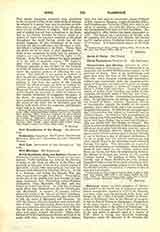

Civita Castellani, Orte, and Gallese, Diocese of (CIVITATIS CASTELLANIE, HORTANENSIS ET GALLESINENSIS). Civita Castellana is a town in the Province of Rome, on the Treia, an affluent of the Tiber, and was built on the ruins of the ancient Falerii, capital of the Falisci, a Latin tribe frequently at war with the Romans until subdued by Camillus, 394 B.C. In 356 B.C., however, and during the Samnite War, this tribe renewed the struggle with Rome. Excavations on the site of the ancient city have brought to light many important finds illustrating ancient Faliscan civilization. Pope Alexander III died, and was buried at Civita Castellana. In 1798 the Austrians under Mack were defeated here by the French general, Macdonald. A number of martyrs suffered within the limits of the Diocese of Civita Castellana. Its first known bishop was Crescentius, who discovered, in 998, the relics of Martianus and Johannes. In 1437 the Diocese of Civita Castellana was united with that of Orte. Orte (the ancient Horta) is a town that rises on a travertine hill some distance north of Rome. Not far from here are the catacombs of St. Eutychius and others recently discovered. Thirty-eight bishops of Civita Castellana are known previous to its union with Orte. Among the noteworthy bishops since that date may be mentioned: Angelo Pichinoli (1486), nuncio to Hungary; Angelo Gozzadini (1621), and Gianfrancesco Tenderini (1736), who died in the odor of sanctity. In 1252 the Diocese of Gallese was incorporated with that of Civita Castellana. Reestablished in 1562, Gallese was again suppressed in 1573. The diocese has a population of 40,200, with 29 parishes, 202 churches and chapels, 105 secular and 27 regular priests, 6 religious houses of men, and 13 of women. It is immediately subject to the Holy See.
U. BENIGNI

